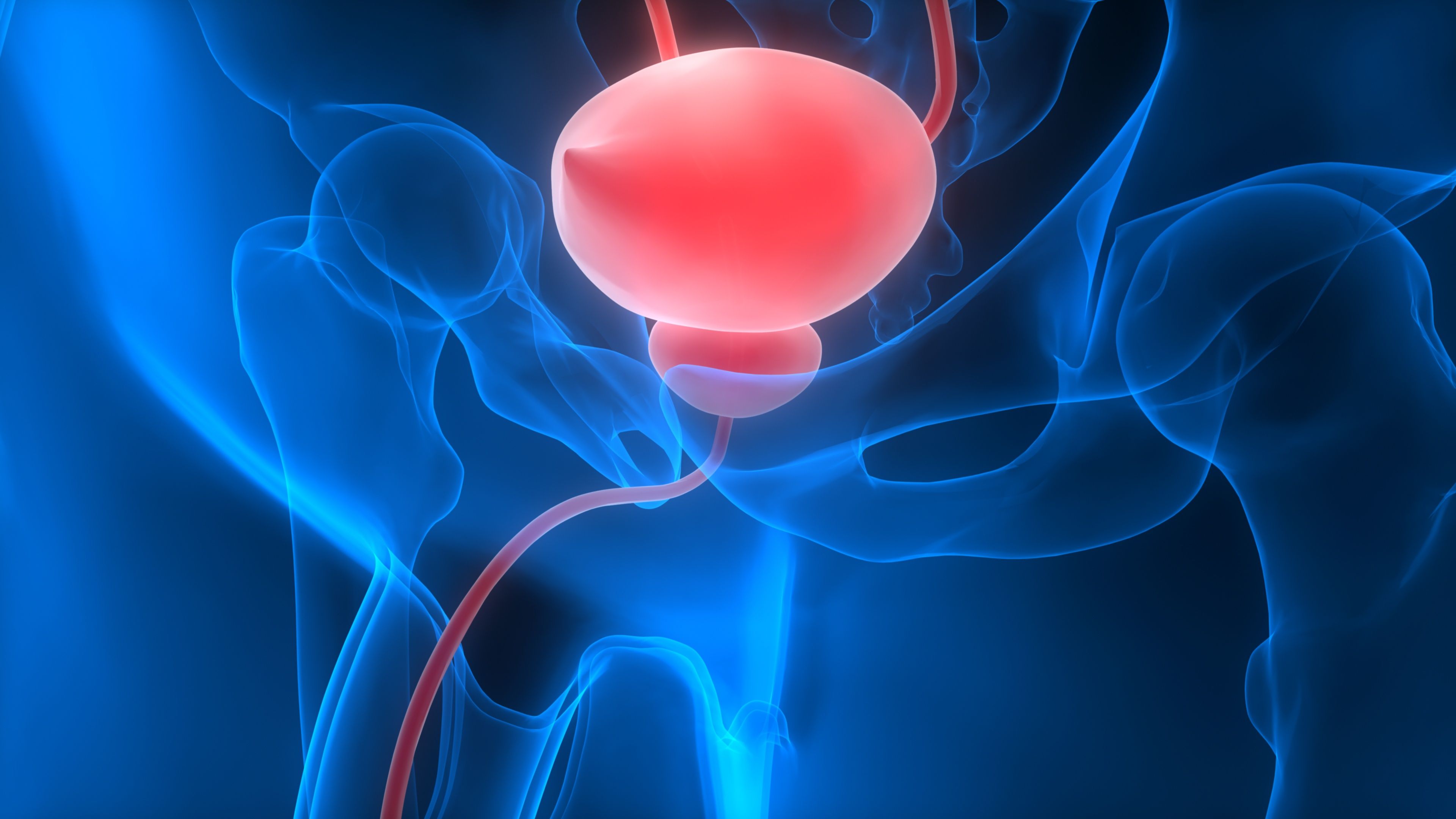
Treatment with enzalutamide (Xtandi) resulted in significant treatment responses in patients with low- and intermediate-risk localized prostate cancer vs active surveillance alone, according to findings from the phase 2 ENACT trial (NCT02799745).
Treatment with the monotherapy resulted in a significant 46% reduction in disease progression vs active surveillance alone (HR, 0.54; 95% CI, 0.33-0.89; P = .02). Moreover, odds of a negative biopsy were 3.5 times higher in the active-therapy arm.
The multicenter, open-label trial enrolled patients with low- and intermediate-risk disease from June 2016 to August 2020. Patients who enrolled on the study were randomized 1:1 to undergo treatment with enzalutamide at 160 mg and active surveillance for 1 year or active surveillance alone. Stratification factors included disease risk and type of follow-up biopsy.
The trial included patients who were 18 years or older with histologically confirmed low- or intermediate-risk disease within 6 months of screening who were eligible for active surveillance.
The primary end point was time to pathological or therapeutic disease progression, with secondary end points including negative biopsy results at 1 and 2 years, percentage of cancer-positive cores at 1 and 2 years, time to prostate-specific antigen (PSA) progression, and incidence of secondary serum PSA level increase at 1 and 2 years.
A total of 227 patients were randomized at 66 sites. Of those, 114 were treated with enzalutamide, with 74.6% completing 1 year of active surveillance, 61.4% completing 1 year of follow-up, and 50.9% completing a year of continued follow-up. Among those who were placed under active surveillance (n = 113), 70.8% completed 1 year of treatment, 45.1% completed 1 year of follow-up, and 36.3% completed a year of continued follow-up. All study periods were completed in 47.4% of patients in the enzalutamide arm and 35.4% of those in the active surveillance arm.
The most common reasons for discontinuation were disease progression and patient withdrawal. The study had a median follow-up of 492.5 days in the monotherapy arm and 270.5 days in the active surveillance arm. Additionally, 53.3% of patients had low-risk disease and 75.8% received follow-up biopsies.
A total of 28.1% of patients progressed in the enzalutamide arm compared with 37.2% of patients in the active surveillance arm. Median time to pathological/therapeutic progression was not reached in either group. Additionally, pathological/therapeutic progression was reported in 7.9% of patients in the active treatment arm compared with 23.0% of those in the active surveillance arm (odds ratio [OR], 0.3; 95% CI, 0.11-0.60; P <.01). Incidence of progression at 2 years was comparable between cohorts at 16.0% and 16.4%, respectively (OR, 0.9; 95% CI, 0.36-2.24; P = .81).
Additional findings from the trial indicated that 1-year odds of a negative biopsy significantly increased following treatment with enzalutamide compared with active surveillance (OR, 3.5; 95% CI, 1.76-6.92; P <.001). Despite a higher rate of negative biopsies at 2 years in the enzalutamide arm vs active surveillance, the difference was not statistically significant. The treatment arm also had a significantly lower mean rate of cancer-positive cores at 1 year vs active surveillance (difference in least squares mean, –10.07 [2.40]; 95% CI, –14.79 to –5.34; P <.001). The difference in cancer-positive cores between groups at 2 years was not statistically significant, although the enzalutamide had a statistically significant reduction of 6.7% (95% CI, −11.36 to −2.00) from baseline to year 2. Enzalutamide also significantly delayed time to PSA progression by 6 months compared with active surveillance (HR, 0.71; 95% CI, 0.53-0.97; P = .03).
The most common adverse effects (AEs) in the enzalutamide arm included fatigue (55.4%), gynecomastia (36.6%), nipple pain (30.4%), breast tenderness (25.9%), and erectile dysfunction (17.9%). A total of 88.4% of patients experienced drug-related AEs, 2.7% of which were serious and 7.1% resulted in treatment discontinuation. The majority of AEs in year 1 were grade 1 or 2 in severity. Grade 3 or higher AEs were reported in 9.8% of patients in the treatment arm with grade 3 fatigue being the only event reported in 2 patients. There were no grade 4 AEs and 1 reported grade 5 AE. Moreover, 5.4% of patients had grade 3 AEs that were considered drug related, with 1 event each of gait disturbance, gynecomastia, myocardial infarction, and syncope and 2 occurrences of fatigue.
Reference
Shore ND, Renzulli J, Fleshner NE, et al. Active surveillance plus enzalutamide monotherapy vs active surveillance alone in patients with low-risk or intermediate-risk localized prostate cancer. Published online June 16, 2022. doi:10.1001/jamaoncol.2022.1641
"low" - Google News
July 09, 2022 at 01:15AM
https://ift.tt/XVReybG
Enzalutamide Yielded Significant Benefit Vs Surveillance in Low-/Intermediate-Risk Localized Prostate Cancer - Cancer Network
"low" - Google News
https://ift.tt/eIQ7RUG
Bagikan Berita Ini














0 Response to "Enzalutamide Yielded Significant Benefit Vs Surveillance in Low-/Intermediate-Risk Localized Prostate Cancer - Cancer Network"
Post a Comment